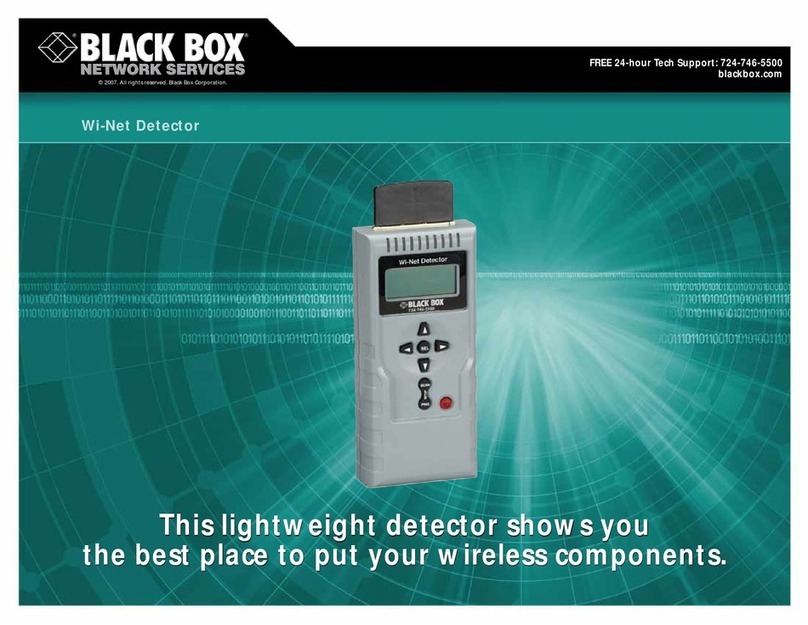
9
1. 8 7 7. 8 7 7. 2 2 6 9 BLACKBOX.COM
NEED HELP?
LE AVE THE TECH TO US
LIVE 24/7
TECHNICAL
SUPPORT
1. 8 7 7. 87 7. 2 2 6 9
Calibration Factor
This is a Calibration tool. If you wish to calibrate the temperature sensor, for example, you could enter an offset value of 5.
In this example, if the sensor reads 20 degrees then it would record as 25 degrees. This figure can also be a minus figure
(for example,. -5 would show 15 degrees instead of 20).
Data Collection Type
This refers to the data collection from the sensor and how the data is then displayed on the graphs. There are four options
for the collection of data: Average, Highest, Lowest and Instantaneous. The default setting is “Average.”
When the data collection type is set to “Average,” the averaged value between 2 graph intervals is stored, and output
graphs for the daily, monthly, and yearly all have the same size on the screen. For the daily graph, each data point on the
graph is one data point collected from the sensor. But for the monthly and yearly graph, in order to display more data into
the same size as the daily graph, some consolidation on the data is needed. One data point on the monthly and yearly
graph is an average of the sensor data in a range.
The maximum and minimum values showing on the monthly and yearly graphs are the value of this consolidated data
and not the raw data over that period of that time. The When the Data Collection Type is set to the Highest setting,
you will get the graphing output displaying the sensors highest average readings during sampling. This is the same for
the Lowest setting (lowest average). With the Instantaneous setting you can store the actual value of the sensor at the
sampling interval without averaging.
Enable Calendar
This allows you to schedule when the notifications will be active.
Graph Enable
In order to save the data from the sensors on the unit you will need to enable the Graphing feature on the unit. You need
to change the “Enable Graph” to the On position and click on the Save button to enable the graphing.
Note: You could also enable the graphing from the Summary page.
CHAPTER 3: OPERATION




























